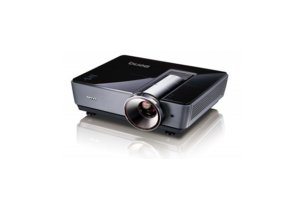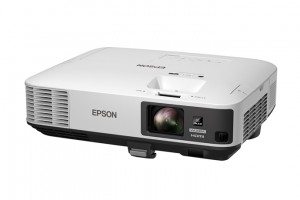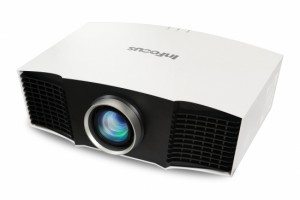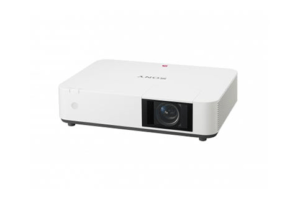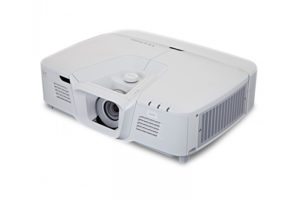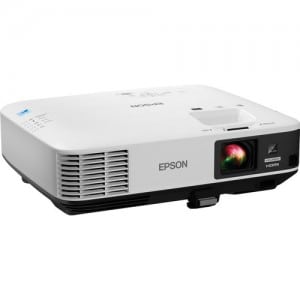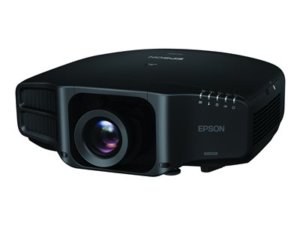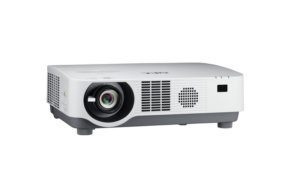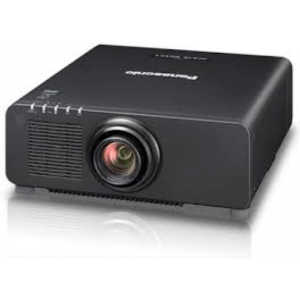This group of projectors includes five larger venue projectors. The projectors are listed in alphabetical order. All can handle large university classrooms, with brightest claiming 6000 lumens. Of these five, one is a laser projector (the Sony).
It's true that each year those projectors we refer to as "standard" rather than "larger venue" keep getting brighter. A decade ago a 3000 lumen projector would certainly be considered large venue, today it's hard to even find a "standard" K-12 projector claiming much less than 3000 lumens. Well, with that in mind:
This year's five higher education/large venue projectors come from five major players in the projector industry: BenQ, Casio, Epson, InFocus, Sony, and Viewsonic.
But first, an exception to our normal selection process:
In addition to the five projectors covered, I've added a "projector series" to the list of projectors, It is NOT part of the competition for our Large Venue awards. Adding that series, is based on our review published last July of the Epson L1505 laser projector. I have deemed the 12,000 lumen, $21,999 list price, Epson L1505 to be too expensive to really compete here.
About the only education situation I could see where that kind of money (even after Education discounts) would be spent, would be in a very high end museum setting. Many museums are affiliated with universities, and many projector manufacturers therefore include those museums in their Education programs.
The reason for adding a section on the Epson L series lasers is that the L1505 is near the top of their full line of laser projectors. Most of those other laser projectors are far less expensive, with education prices starting at $5399! Those lower cost L series are well within the spending range of many universities for large lecture halls, etc. As a result, I will use that extra section to talk about the Epson L series line-up's capabilities, rather than the reviewed L1505. These Epsons offer multiple lens options, which none of the five do, so it offers an alternative in this report, for those who will need lens options. We don't give out awards in this report to projectors we have not reviewed, thus the special handling.
OK, let's meet our entries, with a product summary of each.
We wish to thank Epson America for sponsoring this year's Best Classroom Projectors report.
This group of projectors includes five larger venue projectors. The projectors are listed in alphabetical order. All can handle large university classrooms, with brightest claiming 6000 lumens. Of these five, one is a laser projector (the Sony).
It's true that each year those projectors we refer to as "standard" rather than "larger venue" keep getting brighter. A decade ago a 3000 lumen projector would certainly be considered large venue, today it's hard to even find a "standard" K-12 projector claiming much less than 3000 lumens. Well, with that in mind:
This year's five higher education/large venue projectors come from five major players in the projector industry: BenQ, Casio, Epson, InFocus, Sony, and Viewsonic.
But first, an exception to our normal selection process:
In addition to the five projectors covered, I've added a "projector series" to the list of projectors, It is NOT part of the competition for our Large Venue awards. Adding that series, is based on our review published last July of the Epson L1505 laser projector. I have deemed the 12,000 lumen, $21,999 list price, Epson L1505 to be too expensive to really compete here. About the only education situation I could see where that kind of money (even after Education discounts) would be spent, would be in a very high end museum setting. Many museums are affiliated with universities, and many projector manufacturers therefore include those museums in their Education programs.
The reason for adding a section on the Epson L series lasers is that the L1505 is near the top of their full line of laser projectors. Most of those other laser projectors are far less expensive, with education prices starting at $5399! Those lower cost L series are well within the spending range of many universities for large lecture halls, etc. As a result, I will use that extra section to talk about the Epson L series line-up's capabilities, rather than the reviewed L1505. These Epsons offer multiple lens options, which none of the five do, so it offers an alternative in this report, for those who will need lens options. We don't give out awards in this report to projectors we have not reviewed, thus the special handling.
OK, let's meet our entries, with a product summary of each.
We wish to thank Epson America for sponsoring this year's Best Classroom Projectors report.
Larger Venue Projectors Considered
To locate the short overviews, reviews and brochures of all larger venue classroom projectors considered in this report, click on the links in the table below!
A 2 to 4 year "shelf life" is common for projectors in this class. Prices typically fall significantly over that period.
Here are four previous award winners in this category, with two of them still current, with one from our 2014-2015 report, and one from our 2015-2016 report, and the other two from last year's.
BenQ SU931
The SU931 is a serious large venue projector. Brian was generally impressed. This BenQ slightly beat its 6000 lumen claim, whereas more than half of projectors we review come up short. There are four color modes: Bright - the brightest - as you would suspect is strong on greens, yellows are mustardy and true reds come up dark wine colored. In other words, a typical bright mode for a single chip DLP. (And to a lesser degree 3LCD projectors.)
Presentation mode, however, is dramatically improved while still pouring out 4500 lumens, and sRGB is better still at 4350 lumens. Cinema, the very best mode, measured over 3700 lumens, and looked great.
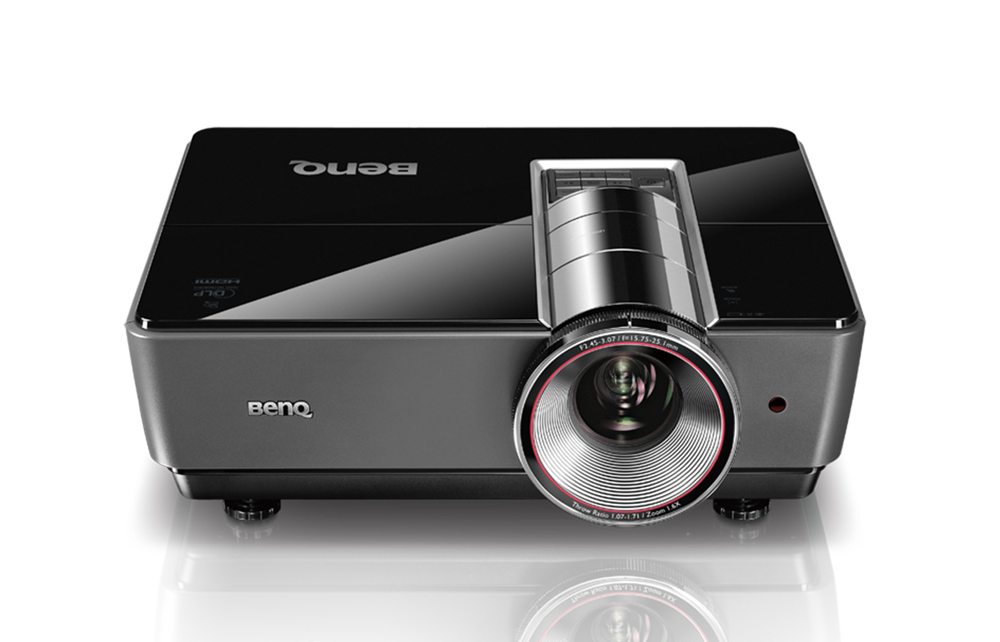 Click Image to Enlarge
Click Image to EnlargeThe 1.6:1 manual zoom and lens shift provide lots of placement flexibility but unlike many large venue projectors, there are no other lens options. Most installations however, try to get by with standard lenses, because optional lenses (and being able to accept them) typically raises the cost dramatically.
Color in best modes is excellent, blacks are very good despite the 3000:1 contrast claim. The projector supports wired networking, but there is no option for wireless, which we see as unfortunate, for many installations. This is one of the louder projectors we've reviewed. Although claiming 39 db max, Brian measured 51 db. That's certainly not quiet, but then this projector is going in really large rooms so that extra noise shouldn't be a real problem.
We like that both Crestron RoomView and AMX Discovery networking protocols are supported, providing lots of advanced networking features if your school is using either networking scheme. Many competitors are only Crestron.
Hurting the BenQ in this comparison report is the cost of operation an area many schools and colleges are concerned about: At full power the lamp is rated only 2000 hours - the lowest, by far, of any of these projectors. In addition, the $599 list price for replacement lamps is as high as they get for this class of projector. One of the competitors in this report, of similar brightness, gets 5000 hours at full power, and the replacement lamp is $129. DLPs also draw more electricity per lumen than 3LCD, adding an additional disadvantage when compared to that technology. The short lamp life may also be a real disadvantage in requiring the projector be attended to more often, and also when the projector needs to be mounted where it's hard to access to change the lamp, although that's more of an issue with projectors using longer throw, optional lenses.
Overall, the SU931 is a strong performer, but the high cost of operation - due to lamp related, limits its competitiveness, except in environments where usage is limited - it would be far more competitive in a setup where 2000 hours of lamp life might last several years. BenQ needs to drastically reduce the price of its replacement lamps for this model, or at least to include a spare with every unit purchased. That alone would make it a good bit more competitive for those watching every dollar.
Epson Powerlite 2265U
In the past we've mostly tended to review Epson's larger venue projectors that sport interchangeable lenses, such as the G7905 in last year's education report. The Powerlite 2265U lacks the interchangeable lenses, and in exchange for that limitation, costs far less than any of the G series projectors (even if you go with the standard lens for the G series). You could consider the Powerlite 2265U to be an updated, more powerful version of the Powerlite 1985U we reviewed two years ago.
As you would expect, this is a 3LCD projector. It's one that has a well endowed feature set and it's also bright - the 2nd brightest in the group, claiming 5500 lumens. Thanks to being 3LCD, its brightest mode with very respectable color suitable for all but color accuracy critical content, that can put out up to 4600 lumens (Presentation mode). The even better Cinema mode measured just over 4400 lumens with the lens at full wide angle (closest position to fill a screen). For the medical, scientific and engineering communities the 2265U offers a DICOM Simulation mode for viewing X-rays, MRIs, and other scientific films.
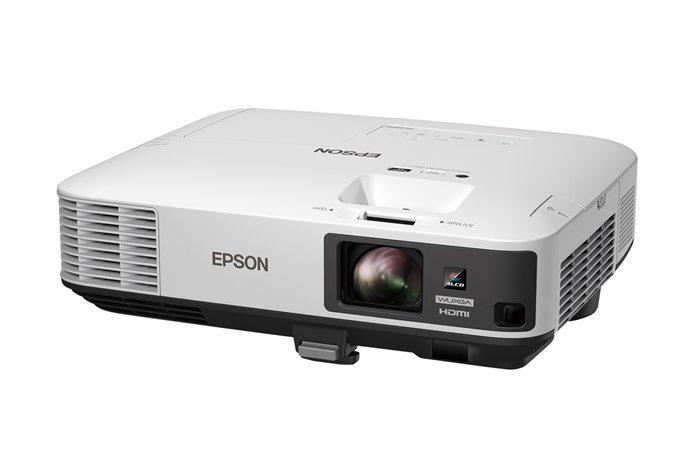 Click Image to Enlarge
Click Image to EnlargeAll considered the Epson Powerlite 2265U is rather feature laden - other than lacking lens options. The 1.6:1 zoom offers the 2nd most zoom range of the five projectors.
For a large venue projector it's pretty small, and, it weighs in at only 10.4 pounds. The warranty is a really good one with 3 years parts and labor, and a rapid replacement program for all three years (that's one year more on both parts, than on non-education purchases. Still, it's not the best warranty found in this report (that belongs to NEC).
Even more impressive is that for a projector of this brightness and cost of operation, Epson claims a 5000 hour lamp life at full power!
I said the Powerlite 2265U has a well endowed feature set. Consider: Two HDMI inputs (with HDMI 1 supporting MHL for working with mobile devices), two USBs and a LAN networking input (RJ45), but there's even a separate HDBaseT input (also RJ45). There's plenty of audio inputs (and an output), and two rather than just one, analog computer inputs (they can double for component video). Wireless is $99 optional. Epson provides a lot of networking software, but know it's Crestron RoomView too.
A microphone input would have been nice, to amplify the teacher/student/presenter through the projectors's 16 watt speaker system. Well, I guess you just can't have everything at this price point. As is typical for business/education Epson projectors - no 3D.
The picture itself is very sharp - remember, this is a WUXGA projector - 1920x1200. Even 8 point type at this resolution is easily readable. 8 points is awfully small at WUXGA resolution, so the results were surprisingly excellent. 8 points at a reduced WXGA downscaling, is downright sharp looking! Overall, sharpness is really good. If you want really any better, practically you'll have to start looking at higher resolution projectors accepting 4K content.
Epson's big on the Education market. Unlike most manufacturers they publish online their educational pricing (that's normal quantities - an authorized dealer would normally contact Epson's Brighter Futures program if their school customer is looking for high volumes.
From that public Brighter Futures pricing I can tell you that the standard education price for the Powerlite 2265U is $1949. The cost of a replacement lamp for education buyers is an impressively inexpensive $129! Barely more than 1/4 of what the most expensive lamp of these projectors sells for. Overall, the 2265U is the second least expensive of the five projectors, with the Viewsonic costing the least.
In summary, the Epson is extremely bright, compact, has great color, lots of features, and is aggressively priced. It's education warranty is one of, but not the best.
InFocus IN5148HD
The InFocus IN5148HD is perhaps the most feature laden of the group. Its 5000 lumens and 1080p resolution are just the beginning. Note, this 5148HD is 1080p res, not the slightly higher WUXGA resolution. It certainly wins in placement flexibility with a 2:1 zoom lens, and lots of lens shift. In addition, the lens features are motorized, which can be a real advantage in some installations. Still, it doesn't have interchangeable lenses, but none of the five considered in this report do.
The IN5148HD is a single chip DLP projector, a fairly large one, weighing in at just under 20 lbs.
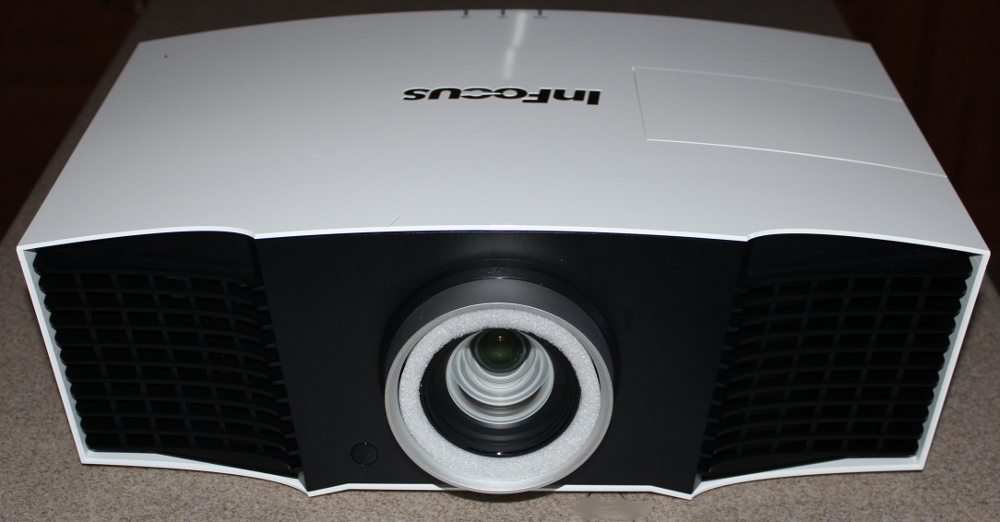 Click Image to Enlarge
Click Image to EnlargeWhat's noteworthy about this InFocus is that it's a bit "smarter" than the competition. InFocus over the years has come up with some user friendly ideas. This projector supports their LightCast system - a $300 option, which provides wireless, but also all in one support for Apple Play, Chrome, MiraCast and their own LightCast mobile interfacing. With other projectors you might hook up an Apple TV and have MiraCast built in, or also hook up a MiraCast supporting device. This is simpler.
In addition it lets the projector work as a digital whiteboard, or browse the internet. The InFocus has 3D, using DLP-Link 3D glasses.
And here's something really interesting (but only to a small slice of the market); the IN5148HD is spec'ed to be able to operate as high as 10,000 ft altitude, in its high altitude mode. Thats much higher than most claim, and double some. If your town's or city's schools are "mile high" or higher...
The biggest disappointment though, is not the hardware, but the warranty. InFocus provides only a single year.
One might say, with its LightCast and motorized lens features and best in class placement flexibility, that this is the elegant projector of the five, and that's reasonable, but with that comes a higher price tag, with the IN5148HD having a wide range of prices online from low $3000s all the way up to $4000, that despite a $6889 list price (the list price may have been lowered since we reviewed it).

